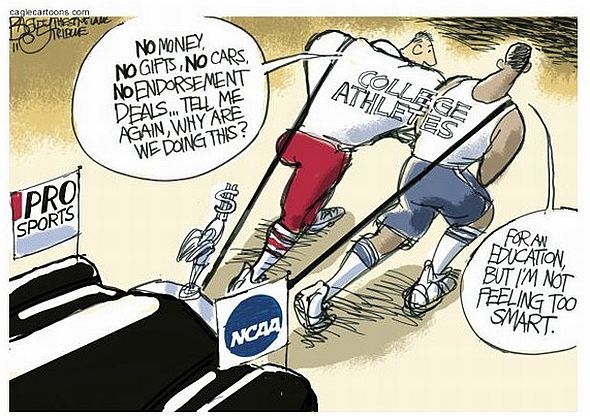“. . . NCAA dictates terms to its hundreds of member schools and tens of thousands of college athletes, leaving players with little or no say about financial compensation questions or how to improve their own safety. That college football generates hundreds of millions of dollars in revenue only bolstered the argument for a union, he said. “How can they call this amateur athletics when our jerseys are sold in stores and the money we generate turns coaches and commissioners into multi-millionaires?” Colter asked.” – J Hall

The obsession over sports, long analyzed as half-crazed, defies logical explanation. Even so, it is undeniable that organized athletics is big business. This standard certainly applies to professional leagues, but often it is overlooked just how much money is involved in “so called” amateur games at the college level. A Brief History of the National Collegiate Athletic Association’s Role in Regulating Intercollegiate Athletics serves as a useful primer. Regulation of intercollegiate athletics may seem a desirable and necessary function to maintain the integrity of sport. In spite of this noble objective, the supervision of the NCAA over college athletics usually comes down to the excessive administration of football and basketball.
Yes, men’s games have a distinct advantage over the rest of the field. There is a simple reason, MONEY. The headline, NCAA approaching $1 billion per year amid challenges by players, screams louder than any fan packed stadium. “The NCAA made $912.8 million last year, 84 percent of which came from one, three-week event: The Division I men’s basketball tournament.”
Not to be outdone, Forbes reviews The Economics of College Football: A Look At The Top-25 Teams’ Revenues And Expenses. An important and salient point indicates that not all teams are equal. “Those teams who either have their own network or whose conferences have their own network have extra streams of revenue that boost their numbers.” Continue reading
